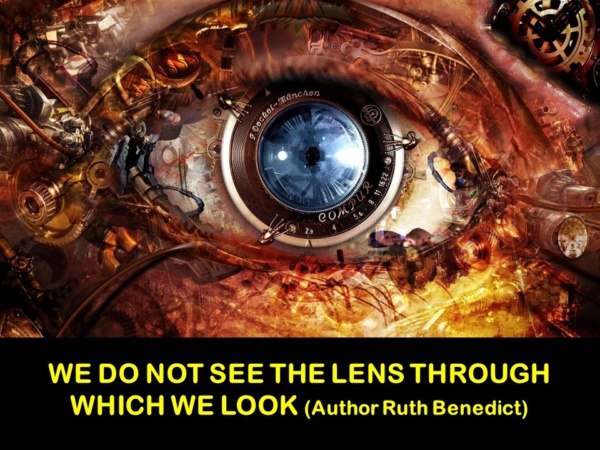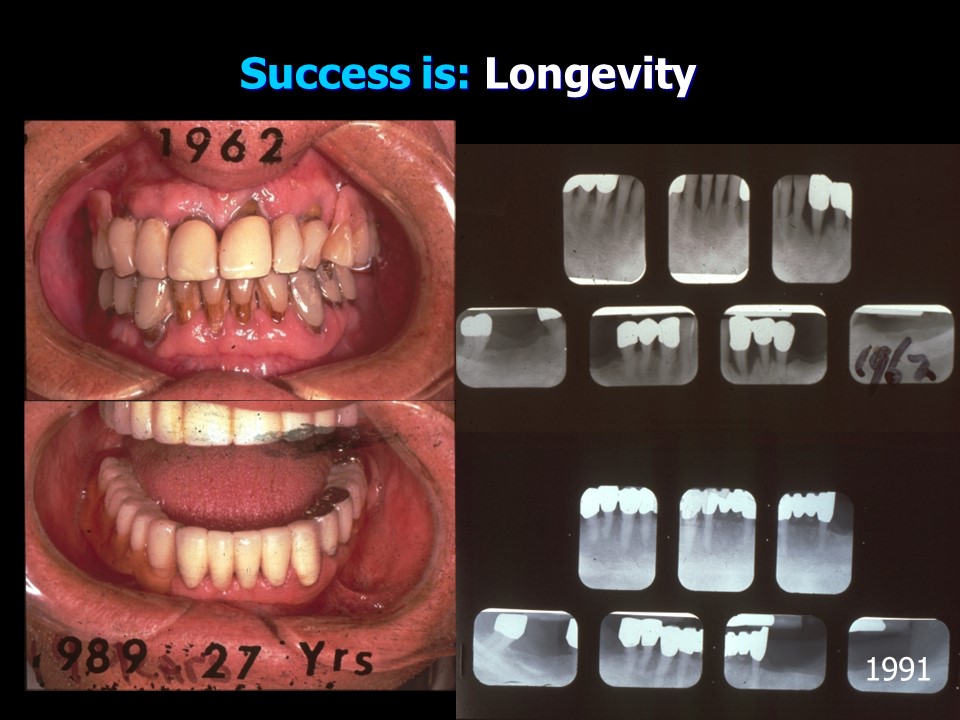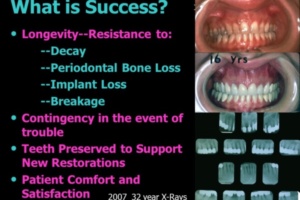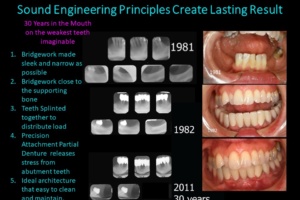
Whatever Happened to Science?
Whatever happened to true unbiased science? Science today is replete with fraud and corruption. No science has been left untouched—including dental science.
Patrice Lewis hits the nail right on the head in her essay “I Wanted to be a Scientist” [WorldNet Daily, March 6, 2010]:
“We tend to elevate scientists to towering status because they possess great knowledge and have the ability to draw conclusions based on unbiased data. We think just because someone has academic credentials, his methods are sound, his ethics above reproach and his conclusions infallible.
But such is not always the case. It’s the old rule of “Follow the money.” Just as we would never trust data concluding that smoking is harmless if the only study was conducted by Phillip Morris, so we must logically deduce that any studies funded by the government only conclude what the government wants us to see – regardless of the truth.
Of course, not all scientists are fraudulent. To make such a statement would be, well, scientifically inaccurate. But the honest scientists are often pummeled into silence and refused publishing opportunities if they deviate from the authorized agenda. We only hear from the corrupt scientists – the political lackeys – because the mainstream media are ignorant of the Scientific Method, and, being in the pocket of the government, they report only what the government gives them to report. Even peer-reviewed scientific journals are not immune to suppressing papers that disagree with a predetermined agenda.”
As a reviewer for the Journal of Oral Implantology, I know that every paper has an agenda—a reason why the paper was submitted in the first place. It is extremely rare that the agenda is altruism—a means to further the cause of pure science. And it is certainly true that reviewers come to the table with built-in biases. I stand before you, guilty as charged.
However, unlike most reviewers, I actually do have an open mind. My bias is that I see everything through the lens of “basic principles” of the ONWARD program. These principles are sound biomechanical fundamentals that are proven. The ONWARD program has 70 years of documented evidence for the validity of these basic principles.
This lens I wear over my eyes makes me an “outsider” in the world of dental education. I have discovered the painful truth that for many opportunities in that world, outsiders need not apply.
I believe strongly that most practitioners start their careers as I did with pure, idealistic intent to study the natural world and further the cause of improving humanity. But most fall prey to the dark agenda of economics and idealism is lost forever. The dark agenda begins with the outrageous debts they inherit from the soaring costs of dental education. At a time when new graduates need to concentrate on building their rudimentary skills and knowledge, they are forced to concentrate on how they will pay back their enormous loans. The pressure to “produce” prevents new graduates from ever living up to their true potential.
I was extremely lucky in that I did not have any of these concerns when I entered the dental profession. I started my practice career as an idealist without the pressure to “produce”—and as a result, I remain an idealist to this very day. My father demanded nothing less than perfectionism—and he was the toughest of taskmasters. I was expected to deliver the highest quality care from day one, no matter how long it took. “If you think you can do better,” he barked, “Why don’t you???” I had no choice but to rise to the occasion with this precision mindset. As I gained experience, I became better and faster. I became a great practitioner because of him.
My father never granted me the luxury of expediency for production’s sake. He always said that one of the hardest tasks in dentistry is to “be your own worst critic.” No one is looking over your shoulder. He never accepted anything but the best, and I saw him do things over that I know 99% of dentists would gladly accept. Sadly, very few practitioners are being trained today with this mindset. The poor patients sit in dental chairs everywhere with blind faith, and they hope for perfection from their doctors. They have no idea how to evaluate what they are actually getting.

During the course of my career, I have also witnessed the entire dental profession cave to economics. Corporations now seem to call all the shots—paying the honorariums of the speakers and pushing products that often violate sound basic principles taught by the ONWARD program. Corporations no longer care about advancements in Dentistry. They aren’t willing—as they were in the past—to support doctors with superior treatments if needed products can’t immediately enhance their bottom line. I can say this because I recently had run-ins with companies that used to make the simple male-female attachment for the double-tilt precision attachment cases that I teach. These companies are under new management who no longer care about their history or the advancement of the profession.
The entire profession has also become mesmerized with technology and accepts new technology with open arms as an end in itself. It does not matter how the end result compares to the standard of what came before. New practitioners today have no idea about the standard of what came before. They have no idea how much that standard has dropped in the name of expediency. This is not advancement!!!
What sells in the postgraduate dental education arena today? Lucrative treatments, with shortcuts and quick fix techniques to make a fast buck. Case longevity—the true measure of a successful outcome—is not even considered important, and it is not discussed. Follow-up X-Rays are never shown at presentations—even those given by the biggest names on the circuit. We should not accept this!
I have another scathing indictment to make: Dental education indoctrinates students with dogma that is accepted as truth without any evidence whatsoever! It seems to me that theories tend to become indisputable FACT the longer they are around. Observations that conflict with the theory are discarded or statistically manipulated to reinforce belief. Out-of-the-box solutions to problems are pooh-poohed and their proponents marginalized to “fringe” status.
Very few practitioners ever question the assumptions that they have made because they have been thoroughly indoctrinated with them—often unknowlingly. This is the dirty little secret in all the sciences. Tom Siegfried once pointed out that, “fantastic discoveries can be made by exposing hidden assumptions that are steering scientists in the wrong direction…they go unstated because they’re so obvious that nobody ever questions them.” –[Tom Siegfried, “Assumptions are repulsive, especially about gravity;” Science Matters; April 13, 2006.]
How often have I heard: “This is the way I learned it in Dental School” or “Everyone does it this way?” These sayings are merely justifications for accepting the status quo. And it is verboten to challenge the status quo! What is the status quo? It is the prevailing paradigm, or model for—in this case—full coverage restorative dentistry.
Thomas Kuhn, in his landmark book The Structure of Revolutions, stated that “We see the world through the prisms of paradigms, “some implicit body of intertwined theoretical and methodological belief that permits selection, evaluation and criticism.” Einstein brilliantly simplifies this thought: “We can only see what theory allows us to see.” [Cornelia Dean, in her book, Making Sense of Science: Separating Substance from Spin]
Through my lens I can see that incorrect assumptions lie at the foundation of “modern” full coverage restorative dentistry. These assumptions are responsible for dropping the standard of care given to patients. Why is it that with all the fancy technology modern practitioners have, they can do less than their forbears who had no technology?
Basic principles for successful outcome that have been documented by the ONWARD program for over 70 years are commonly violated with incorrect assumptions, and the application of technology to incorrect assumptions does not constitute an improvement. Per-Ingmar Branemark, the great research who invented the osseointegrated implants emphatically states that “Clinical requirements based on clinical documentation established during half a century must be respected.” [The Osseointegration Book: From Calvarium to Calcaneus; Per-Ingvar Brånemark, with Shu Chien, Hans-Göran Gröndahl , Kingsley Robinson, Barbro K. Brånemark; Quintessenz Verlags-GmbH; 2005]
If there is to be true advancement in this area of dentistry, anything new that comes down the pike MUST be compared to the standard of what came before. This is NOT being done. Don’t get me wrong: I love technology. I love computers and I am adept at using all kinds of software and I’ve taken computers apart. Technology that conforms to basic principles can’t be beat! I know that scanning, 3D printing and milling are accurate. It is not the technology. It is how the technology is being applied that is at issue.
 I believe most practitioners know instinctively that there is something wrong with the prevailing techniques of full coverage restorative dentistry. Many have had bad experiences with full coverage restorative dentistry. As a result, they often choose to extract teeth and place implants instead of saving them because they actually believe that implants are more predictable than crown and bridgework. They simply do not know how full coverage restorative dentistry can save teeth, prevent recurrent decay, and eliminate periodontal bone loss in ways that implants cannot. It is the patients who truly suffer. They are getting a hodge-podge of dental treatments designed with piecemeal thinking. Their dental problems are never actually solved. Is this progress? I think not!
I believe most practitioners know instinctively that there is something wrong with the prevailing techniques of full coverage restorative dentistry. Many have had bad experiences with full coverage restorative dentistry. As a result, they often choose to extract teeth and place implants instead of saving them because they actually believe that implants are more predictable than crown and bridgework. They simply do not know how full coverage restorative dentistry can save teeth, prevent recurrent decay, and eliminate periodontal bone loss in ways that implants cannot. It is the patients who truly suffer. They are getting a hodge-podge of dental treatments designed with piecemeal thinking. Their dental problems are never actually solved. Is this progress? I think not!
How can an outsider like me get the profession to exchange a faulty paradigm to one that has the real track record for successful outcome? How can an individual stand up against big money interests? As long as the prevailing attitudes are quick-fix-take-the-easy-way-out, I might as well be screaming into the wind. Dental Practitioners need to step up to the plate and think like real Doctors rather than mechanical pieceworkers.
Despite the prevailing attitudes, I still believe that dental practitioners can be inspired to treat patients with overall care and longevity in mind. It is not a waste of time to scream into the wind. Someone is bound to hear the message and spread that message to others. Malcolm Gladwell identified the point at which an idea or new paradigm crosses a threshold. He called that point the “tipping point.” Once that point has been breached, it spreads like wildfire.
William James once remarked that any new idea is “first condemned as ridiculous and dismissed as trivial, until finally, it becomes what everybody knows.” When the ONWARD program’s paradigm becomes “what everybody knows,” the standard of care for full coverage restorative dentistry will soar to new heights and the entire profession along with its reputation will truly advance.
Become the best practitioner in full coverage restorative dentistry that you can be! Don’t settle! Join the ONWARD program and learn how to do crown and bridgework with excellence and confidence, how to save “hopeless” teeth, and how to provide new options for patient treatment that you never thought of. Visit the website and join here: https://theonwardprogram.com/membership/
Dr. Feinberg is also available to give presentations. His CV and speaker packet is posted on the website. (https://theonwardprogram.com/about-dr-feinberg/) Dr. Feinberg can be reached at info@theONWARDprogram.com.



